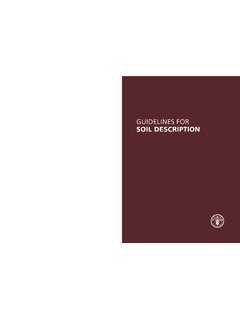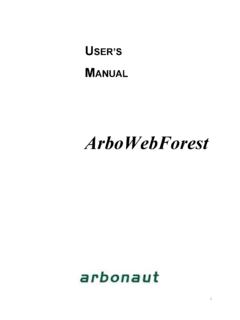Transcription of Experimental Security Research of Tesla Autopilot
1 Experimental Security Research of Tesla Autopilot Tencent Keen Security Lab 2019-03 Table of Contents Abstract .. 1 Research Target .. 1 Background .. 1 Autopilot .. 2 Vision .. 4 Preprocessing .. 5 Remote Steering Control .. 9 CAN Bus System .. 10 APE2LB_CAN .. 11 DasSteeringControlMessage .. 11 Remotely Control the Steering System .. 13 Autowipers .. 15 Implementation Details of Autowipers .. 16 Digital Adversarial Examples .. 19 Adversarial Examples in Physical world .. 22 Lane Detection .. 25 Implementation Details of Lane Detector .. 26 Eliminate Lane attack .. 30 Fake lane attack .. 33 Conclusion .. 35 References .. 36 Appendix .. 37 1 Abstract Keen Security Lab has maintained the Security Research work on Tesla vehicle and shared our Research results on Black Hat USA 2017[1] and 2018[2] in a row.
2 Based on the ROOT privilege of the APE ( Tesla Autopilot ECU, software version ), we did some further interesting Research work on this module. We analyzed the CAN messaging functions of APE, and successfully got remote control of the steering system in a contact-less way. We used an improved optimization algorithm to generate adversarial examples of the features (autowipers and lane recognition) which make decisions purely based on camera data, and successfully achieved the adversarial example attack in the physical world . In addition, we also found a potential high-risk design weakness of the lane recognition when the vehicle is in Autosteer mode.
3 The whole article is divided into four parts: first a brief introduction of Autopilot , after that we will introduce how to send control commands from APE to control the steering system when the car is driving. In the last two sections, we will introduce the implementation details of the autowipers and lane recognition features, as well as our adversarial example attacking methods in the physical world . In our Research , we believe that we made three creative contributions: 1. We proved that we can remotely gain the root privilege of APE and control the steering system. 2. We proved that we can disturb the autowipers function by using adversarial examples in the physical world .
4 3. We proved that we can mislead the Tesla car into the reverse lane with minor changes on the road. Research Target The hardware and software versions of our Research target are listed below: Vehicle Autopilot Hardware Software Tesla MODEL S 75 Background On Black Hat USA 2018, we demonstrated a remote attack chain to break into the Tesla APE Module (ver ). Here is a brief summary of our remote attack chain, the attack chain has been fixed after we reported to Tesla , and more details can be 2 found in our white paper.[3] Fig 1. remote attack chain from 3G/WIFI to Autopilot ECU Our series of Research have proved that we can remotely obtain the root privilege of APE.
5 We are highly curious about the impact of APE s cybersecurity on vehicles, for example whether hackers can analyze and compromise APE to implement unauthorized high-risk control of vehicles. Through deep Research work on APE (ver ), we constructed three scenarios to demonstrate our findings. Here we d like to mention that, our Security Research on APE is based on static reverse engineering and dynamic debugging. However, the autowipers and road lane attack scenarios do NOT need to root the target Tesla vehicle first. Autopilot Tesla Autopilot , also known as Enhanced Autopilot after a second hardware version started to be shipped, is an Advanced Driver-Assistance System feature offered by Tesla that provides sophisticated Level 2 autonomous driving.
6 It supports features like lane centering, adaptive cruise control, self-parking, ability to automatically change lanes with driver s confirmation, as well as enabling the car to be summoned to and from a garage or parking spot. Tesla Autopilot system primarily relies on cameras, ultrasonic sensors and radar. In addition, Tesla Autopilot comes loaded with computing hardware from manufactures like Nvidia, that allows the vehicle to process data using deep learning to react to conditions in real-time. 3 APE, " Autopilot ECU" module, is the key component of Tesla 's auto-driving technology. Though there have been many articles talking about its hardware solution (especially verygreen on TMC[4]), there is much less discussion about its software.
7 As we have known, currently all APE and boards are based on Nvidia's PX2 AutoChauffeur[5] (actually a highly customized one [6]). Our test car is using APE , so that our discussion mainly focuses on the APE board. Here is a simple graph showing how the internal components are connected. Note that this graph omits all other connections which are not related to our Research . Fig 2. Overview of connections on APE module Both APE and APE-B are Tegra chips, same as Nvidia's PX2. LB (lizard brain), is an Infineon Aurix chip. Besides, there is a Parker GPU (GP106) from Nvidia connected to APE. Software image running on APE and APE-B are basically the same, while LB has its own firmware.
8 On the APE part, LB is a coprocessor and supports features like monitoring messages on CAN bus, controlling fan speed, determining whether the 4 APE parts should be turned on, etc. On original PX2 boards the Aurix chips have a console running on the serial port with several useful functions. But on APE , this chip only provides very few commands on the console. Not both APE and APE-B are used for Autopilot , especially considering that not both chips are connected to all sensors. Information from radars and other sensors are transmitted via some CAN buses (including private ones), and forwarded by LB to UDP messages, which can be received by both processors.
9 However, all cameras, especially main, narrow and fisheye, which are primary cameras for the Autopilot functions, are only connected to APE via CSI interfaces. Also, the GPU chip is only connected to APE, and we did not see enough evidence showing that two Tegra chips (as well as the cameras) are sharing the GPU chip. Thus we think APE-B is only something like a "stub function" and APE is the actual chip performing real works. A later investigation to the firmware shows that APE-B might, sometimes, boot from the same image used for starting up APE. The boot process makes us believe that as long as APE and APE-B running the same firmware, we can easily implement our attacks.
10 The firmware of APE is a SquashFS image without any encryption. The image is running a highly customized Linux (like CID and IC ). In the firmware, we observed that binaries of APE software are under /opt/ Autopilot folder. Vision In this section, we will introduce the implementation details of the Tesla Autopilot module s vision system. The binary vision is one of the key components of Autopilot . Autopilot uses it to process the data collected from all cameras. We did a lot of reverse work on the two functions of autowipers and lane recognition which use a pure computer vision solution. The special process of these functions can be summarized to two parts: their common preprocessing, and their own neural network calculation and postprocessing.



